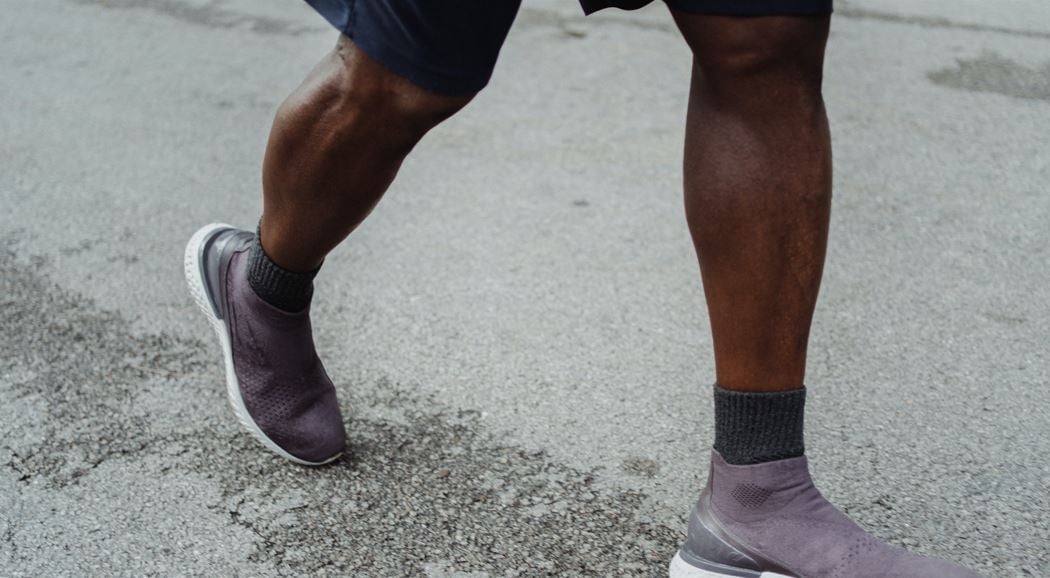Eleven Walking Tips for Better Health and Fitness

Walking regularly can have a massive impact on both your physical and mental well-being. Taking a stroll can be an incredibly effective way to care for your physical and psychological health. It's effortless to do, and the benefits are tremendous.
Whether you're trying to lose weight, strengthen your muscles, or get some fresh air, walking can help. This article shares ten tips for getting the most out of your walks. From proper form to choosing the right shoes, these expert tips will help you confidently walk and achieve your goals!
11 Walking Tips for Better Health and Fitness
A proper warm-up is essential to prevent injury and prepare your muscles when walking for fitness. Select comfortable shoes that provide adequate foot support, and fit you properly. For a more enjoyable experience, opt for scenic routes that inspire you.
Setting realistic goals is critical in building stamina and endurance over time. Focus on good posture while walking, engage your upper body by swinging your arms naturally, and gradually increase speed through interval training. Mix up terrain and routes for variety in your routine.
Remember to stay hydrated during walks by bringing water along the way. Don't forget to cool down properly after completing the walk with stretching exercises targeting all major muscle groups. According to Harvard Health research studies on mindful walking practices, following these tips can help improve overall health and fitness levels.
1. Walk in the morning.
Starting your day with a walk can immensely benefit your physical and mental health. It offers an excellent opportunity to get some fresh air, but walking in the morning energizes your body and prepares you for the day ahead.
Walking in the morning is a simple yet effective way to maintain physical fitness and health. It's an excellent way to jumpstart your day! Moreover, walking helps burn calories, aids digestion, lowers blood pressure, and even reduces stress.
Taking a morning walk is also great for cardiovascular health, as it increases blood flow and helps burn calories. So if you want to lead a healthier lifestyle, get up early and take a pleasant stroll!
2. Start with a warm-up
Before embarking on any walking routine, starting with a proper warm-up is essential. This can help prevent injury and prepare your body for the exercise ahead. Harvard Health recommends beginning with 5-10 minutes of mindful walking at a leisurely pace, gradually increasing your speed over time.
Incorporating upper body movements like arm circles or shoulder rolls can also help loosen up muscles and increase blood flow to all body areas before beginning interval training or more intense terrain walks in the morning.
3. Wear comfortable shoes
When it comes to walking, wearing comfortable shoes is crucial. You want to ensure your shoes support your feet and do not cause unnecessary pain or discomfort while walking. It is highly recommended to wear shoes with arch support and cushioning if you plan on walking on rough surfaces. Doing so will help ensure your feet stay comfortable and well-supported during your journey.
Another tip is choosing breathable and lightweight shoes, which will help prevent blisters from forming. Don't forget to break into new shoes before embarking on a long walk! By following these simple tips from Harvard Health, you'll be able to enjoy mindful walking without worrying about sore feet or injuries.
4. Choose a scenic route.
A scenic route can make all the difference in your walking routine. Not only does it provide beautiful views to enjoy, but it can also help keep you motivated and engaged. Mindful walking on a scenic trail with varying terrain can be interval training for your lower body.
Adding upper body movements like swinging arms or carrying weights is an excellent way to incorporate strength training into your walk. According to Harvard Health, choosing a hilly path will increase calorie burn by up to 50% compared to a flat surface. So why not add some variety and choose a new way each week?
5. Set realistic goals
Achieving success requires having a defined goal and setting up achievable milestones to reach it. Setting realistic goals is crucial when starting a walking routine. It is essential to take things one step at a time and not be overwhelmed by the bigger picture. If you want to remain focused and meet your objectives, here are a few helpful tips for creating very achievable goals:
-
Beginning with achievable goals is vital when it comes to success. As you build confidence, gradually challenge yourself and increase the intensity of the task. This way, you can be sure that your ambitions are achievable. This is a surefire way to reach your biggest aspirations.
-
Consider your age, fitness level, terrain, and other factors when setting your goals.
-
Set both short-term and long-term goals to keep yourself motivated.
Remember that walking is about reaching a particular destination and enjoying the journey toward better health and fitness. Setting realistic goals lets you stay on track while being mindful of your body's needs.
6. Use good posture
Proper posture while walking is essential for avoiding any potential injuries and allowing you to reap the maximum benefits of your walk. As you stroll, stay upright by keeping your shoulders back and down. Ensure your chin is parallel to the ground and engage your core muscles for stability. Pay attention to neck or lower back discomfort, which may be signs of poor posture.
Incorporating interval training or upper body exercises into your walks can improve posture by strengthening key muscles. Consider adding mindful walking practices to focus on proper alignment and body awareness. Harvard Health recommends starting with short intervals of mindfulness throughout your walk, gradually increasing the duration for a more meditative experience.
7. Swing your arms
Swinging your arms while walking is an effective way to engage your upper body and boost calorie burn. Harvard Health recommends keeping your elbows bent at a 90-degree angle and swinging them back and forth in opposition to your legs.
Practicing mindful walking, such as focusing on the sensations of each step, can enhance the benefits of arm swinging for both physical fitness and mental well-being. This can also help maintain balance on uneven terrain. Incorporating interval training by alternating periods of moderate-paced walking with bursts of faster-paced walking can further elevate heart rate and improve overall health.
8. Increase your speed gradually.
Gradually increasing your walking speed is a great way to challenge yourself and improve your fitness. Harvard Health suggests using interval training, where you alternate between periods of fast walking and slower recovery periods.
This improves cardiovascular health and engages the upper body muscles for an extra workout. Remember to be mindful of your terrain and gradually increase speed on flat ground before tackling hills or uneven surfaces. By starting with small increases in pace, you can build up endurance and avoid injury while reaping the benefits of faster walking.
9. Mix up your routine.
Mixing up your training is essential for maintaining interest and motivation in your walking regimen. Try exploring new terrain or routes, such as hiking through the woods or on the beach. Incorporating mindful walking practices can also add variety to your routine, focusing on being present and aware of each step you take.
Additionally, including interval training or upper body exercises during your walks can provide an extra challenge and boost overall fitness gains. Harvard Health suggests alternating between brisk walking and slower recovery periods at different intervals as one example of practical interval training to incorporate into your weekly routine.
10. Stay hydrated
Staying hydrated is crucial for walking for better health and fitness. Drinking water before, during, and after your walk can help prevent dehydration, which can cause fatigue and muscle cramps. When walking in either moderate terrain or hot weather, it is recommended to drink at least 8 ounces of water every twenty minutes for proper hydration.
If you're doing a longer walk or interval training that involves upper body movements like mindful walking or walking in the morning, consider adding an electrolyte-enhanced drink to your hydration routine.
Making the most of your walk and reaping its health benefits is easy. Harvard Health has found essential minerals like sodium and potassium are lost through sweat, making replenishment necessary for optimal performance. These drinks contain these desired minerals essential for such replenishment. Remember these few points the next time you go for a stroll to get the best results.
11. Cool down and stretch.
After finishing your walk, it's essential to cool down and stretch to minimize muscle soreness and prevent injury. To recover from a strenuous workout, following the guidelines is necessary. This could include stretching after you're done, avoiding high-intensity activities immediately after, and taking the time to cool down with a walk or gentle stretches. All of this helps ensure a successful recovery!
-
Slow down your pace for the last five minutes of your walk
-
Stretch major muscle groups such as calves, hamstrings, quads, hips, back, chest, and shoulders
-
Hold each stretch for at least 15 seconds without bouncing
-
Take in a deep breath through the nose and slowly exhale out of your mouth.
Stretching is essential to maintaining flexibility while walking. Harvard Health recommends stretching after every exercise session since tight muscles limit the range of motion, putting undue stress on joints. Incorporating mindful walking into your routine can also help you stay present during stretching exercises.
By following these simple tips, you'll be able to enjoy healthier walks with fewer injuries or setbacks that could impact upper body health or overall fitness goals.




